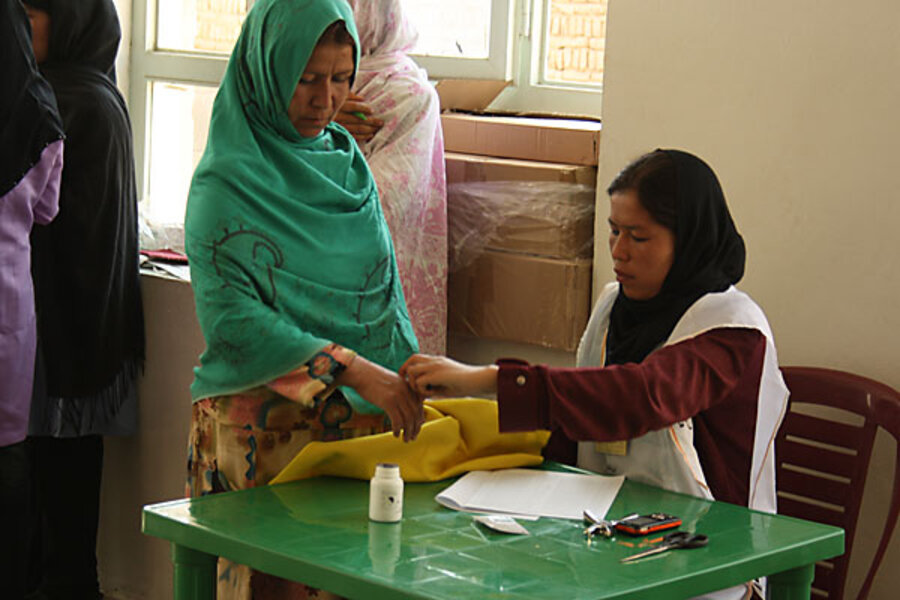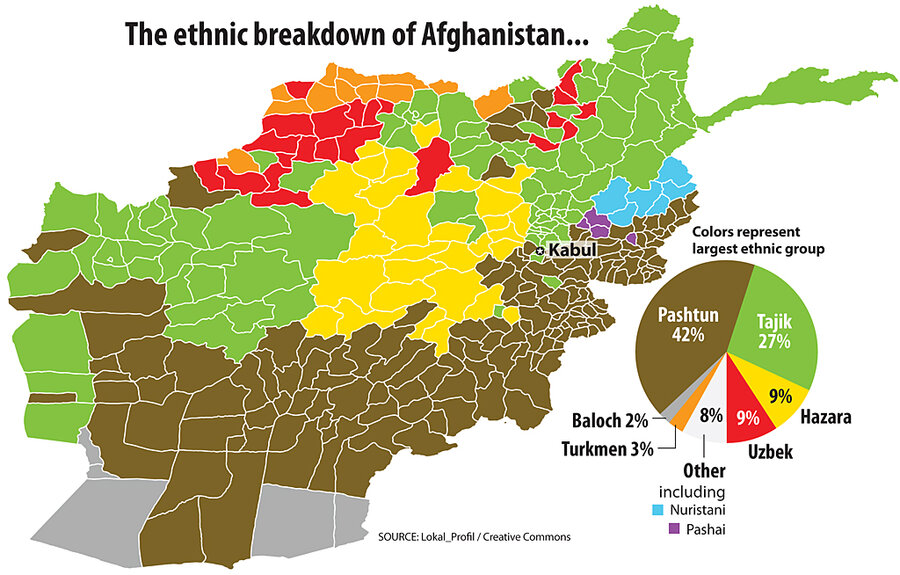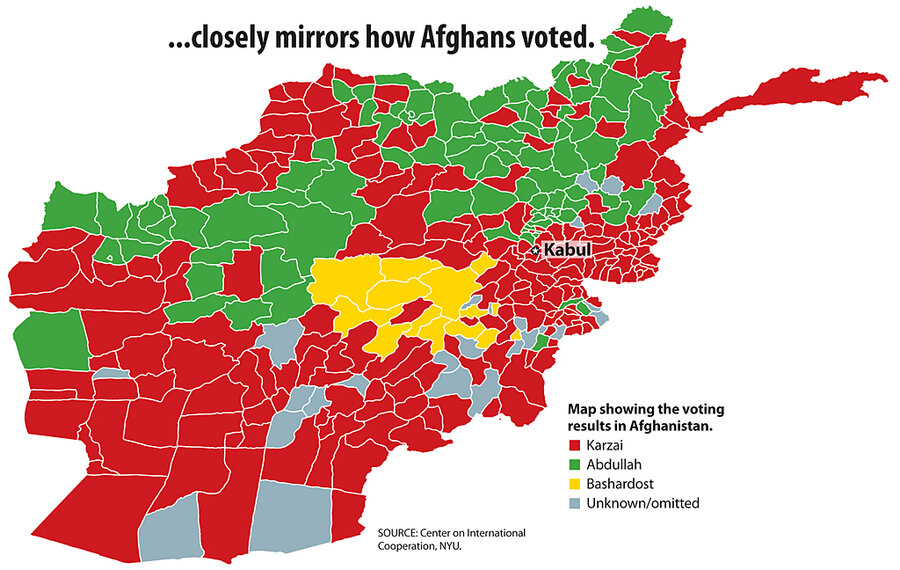Is power in Afghanistan returning to ethnic fault lines?
Loading...
| Khan Neshin, Afghanistan
Voting patterns in Afghanistan show strong overlap with ethnic identity. (See map.) Afghanistan was torn apart in the 1990s during a civil war among ethnic-based warlords, and the outcome of the controversial election in August threatens to rekindle ethnic tensions and burnish the power of the old warlords.
The present conflict already has ethnic undertones: The Taliban are almost entirely Pashtun, the dominant Afghan group. Now the fraud-ridden presidential vote has alienated the Tajiks, who largely backed the losing candidate, Abdullah Abdullah. In Tajik parts of the country, leaders openly question the legitimacy of the resulting government of President Hamid Karzai (a full-blooded Pashtun).
The election also seemingly rewarded Mr. Karzai for turning to ethnic warlords for support, thereby strengthening ethnic factional chiefs.
Karzai wound up carrying the Uzbek-dominated districts, almost certainly due to an 11th-hour deal with Uzbek warlord Abdul Rashid Dos-tum. Karzai brought Mr. Dostum out of quasi-exile to the raucous joy of his community in exchange for Dostum’s support, a man with numerous human rights complaints against him. Karzai also won over a chunk of Hazaras, thanks to a deal with ethnic strongman Karim Khalili. Those votes might otherwise have gone to Ramazan Bashardost, a Hazara.
But strong bulwarks remain against any return to outright ethnic strife. First, Afghans themselves have been conditioned through bloody history to deny the legitimacy of ethnic divisions. Political leaders avoid overt appeals to ethnicity, and ordinary Afghans will often deny that clannish behavior is linked to ethnicity.
Second, Dr. Abdullah has fastidiously avoided calling for “peaceful demonstrations,” an oxymoron in Afghan culture. Abdullah’s fondness of his emerging image as a statesman may keep him as a force for peace even if Karzai does little to share the spoils of victory (something unknown at press time).
Third, perhaps the only ethnic red line that exists in Afghanistan lies with Pashtuns who feel it is their historical and demographic right to lead the nation. The final election result returned Karzai, a full-blooded Pashtun, to power. In some ways, concerns of a coming ethnic clash would have been more serious if Abdullah had won, given that he is viewed as Tajik, despite having one Pashtun parent.
Still, the voting patterns call into question how cohesive Afghanistan has become. Aside from some educated urbanites, the country appears divided into regional ethnic enclaves committed more to self-preservation than to sacrifice for the nation.







